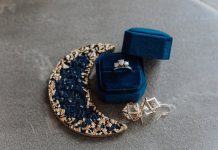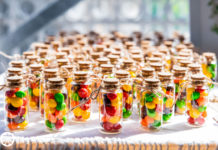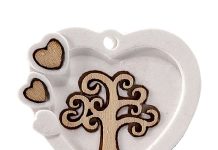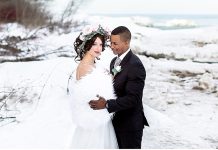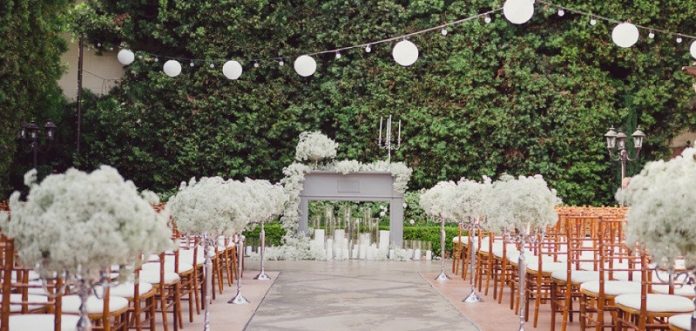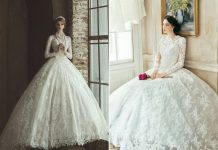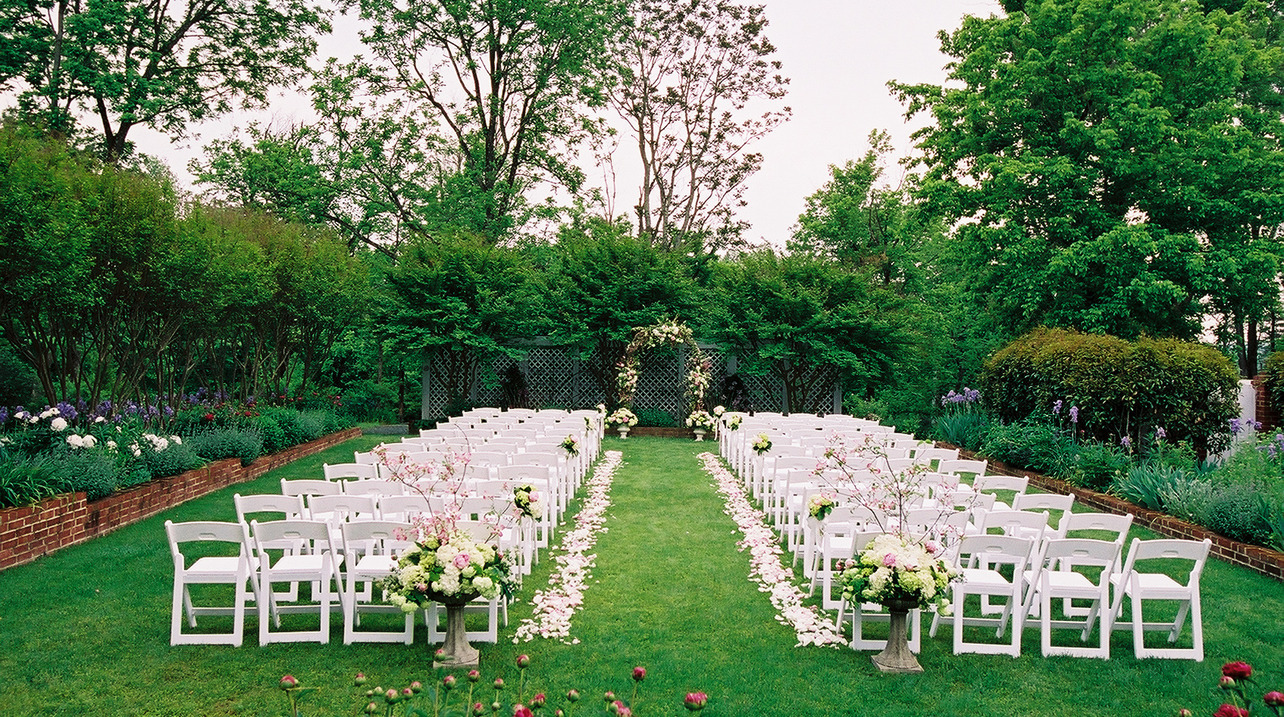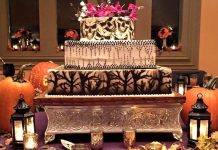Behind every wedding is a set of rituals, traditions and customs. Whether it’s a wedding in a church, on the beach or a registry office — even the most whacky and out there weddings draw heavily on a set of accepted wedding tropes such as the wedding dress, wedding rings or the wedding party. But have you ever considered what the origins of these seemingly universal wedding day traditions are?
Why do we wear the ring of the fourth finger? Why is the groom warned against seeing the bride before the vows? Why is the wedding cake a wedding meal must-have?
We take a look at some of the most common and enduring wedding traditions — and the legends, stories and ideas that they originated from.
“Circle of Trust” — Engagement and Wedding Rings
Rings are at the centre of wedding rituals — given at the beginning and worn until the end. Rings represent the token of the promise of marriage given to the bride-to-be in the form of the engagement ring, and also the symbol of an unbreakable bond presented to the couple at the wedding celebration and worn throughout the marriage. But when did these bands of gold or silver become so synonymous with love and matrimony?
For the slightly cynical out there, the modern engagement ring first emerged out of a well-conceived, if not manipulative, marketing campaign by diamond producers De Beer in 1947. Sure, their iconic slogan “a diamond is forever” may have kick-started the trend for diamond engagement rings — but the engagement ring’s history as a symbolic token of love goes way back into history.
In the ancient civilisations of Egypt, Greece and Rome, rings were mementoes of devotion. Then — as now — the cyclical shape of rings were considered to symbolise the circle of trust established between a couple and the unbreakable bond of love and respect shared between them. The reason we wear our rings on the fourth finger also has its origins in the ancient world — specifically in Ancient Roman society, which believed that there was a vein that leads directly from your fourth finger to your heart. It was thought that wearing your ring on your fourth finger signified your heart’s connection to the person that gave you the ring — and it’s a tradition that has stuck.
When choosing your engagement and wedding rings, some myths may aid your selection — and they have nothing to do with unscrupulous marketing! Legend has it that sapphires and aquamarine stones signify marital bliss, while mystical pearls are associated with unhappy marriages and bad luck. Or you could take inspiration from the Victorians who favoured the winding coils of snake-shaped rings with decadent ruby eyes!
“Something Old, Something New, Something Borrowed and Something Blue”
There are few brides brave enough to break this ‘ol wives tale. We’re sure more than a few flustered brides have done a last minute dash to make sure that they have all the correlating items before heading up the aisle. But where did the saying emerge and what does it mean?
Contrary to popular belief, nothing bad will happen if you don’t have old, new, borrowed and blue things concealed on you for the big day. As with many ol’ wives tales tracking down an origin story is impossible; it’s one of those informal superstitions that was passed from women to women over the years — but the sentiment is pretty clear.
The “something old” symbolises a connection to the past and your ancestors. “Something new” represents your future with your partner. “Something borrowed” is a token of luck and was traditionally given by a happily married friend or relative, and “something blue” is said to symbolise love, purity and fidelity.
Girl Squad — Bridesmaids and the Wedding Party
Bridesmaids and groomsmen play an integral role in wedding arrangements and festivities. Tasked with a whole host of responsibilities, today the wedding party is made up of trusted friends and relatives that help to ensure that everything runs smoothly. But the history of the wedding party actually has some pretty sinister origins.
As far back as ancient Roman times, men and women were required to witness the wedding for the marriage to be legally binding. But they had another purpose too that had an otherworldly significance. The groom’s male friends and the bride’s girlfriends (groomsmen and bridesmaids today) were instructed to wear the same clothes as the couple. They believed that by wearing similar clothes to the bridal couple, they would confound evil spirits that sought to harm the newlyweds and disrupt the celebration.
And it wasn’t just the Romans that used decoy brides. In medieval and early modern times, bridesmaids dresses also echoed the bride’s dress — but this time, rather than acting as a decoy bride for evil spirits, these hero bridesmaids were there to trick highwaymen who made a living from stealing brides and demanding hefty ransoms. Now that’s what you call good friends!
A Veil of Secrecy
Whether you’re prone to superstitions or not in your everyday life, when it comes to weddings, people tend to get a bit Stevie Wonder — “very superstitious!” And of all the wedding superstitions, none is more prevalent than making sure that the groom doesn’t see the bride before the wedding.
Measures are taken to keep the bride’s dress hidden, couples spend the night before apart, and whatever the venue size, a careful choreography to conceal the bride before she steps out towards her husband-to-be is cautiously enacted. But this is one tradition with a less than romantic backstory.
This tradition first originated back when marriages were more business contract than loving celebrations. Back then, brides and grooms were forbidden to see each other for fear that they would pull out of the wedding. It’s that same logic that birthed the tradition of the veil that covers the bride’s face until the “I dos.”
From business origins, we still reckon that the anticipation, followed by the overflowing delight at seeing your loved one on your wedding day makes this a tradition still worth following!
“Icing on the Cake” — the Wedding Cake
Wedding cakes have been a sweet staple at the wedding table since the Roman Empire. Back then, the cake — which in reality was more like a loaf of bread — was a symbol of fertility. At the end of Roman ceremonies, the cake was broken over the bride’s head as a way of ensuring that the newlyweds had a fruitful marriage. Today, the cakes are sweeter and the breaking of the bread has been replaced with “cake face” — when the couples squish cake into each other’s mouths. But the meaning remains the same — a cake means a long and fruitful union.
Today, the higher, more fancifully frosted the cake, the better and we have medieval English society to thank for that. History has it that tiered wedding cakes first emerged as part of a game performed by the newlyweds at medieval weddings. Back then, cakes were piled on top of each other and the newlyweds had to strain over them to kiss one another without knocking them over — sounds perilous!
With so many tiers, what to do with all that leftover wedding cake? Well, according to legend, it should go to all the single ladies. Folklore has it that if a single female wedding guest places a slice of cake beneath her pillow, she will see a vision of her future husband in her dreams. Either way, cake under your cushion is a convenient and delicious midnight snack!
Author Bio: David Graff is the founder of David Charles Childrenswear, an iconic British designer childrenswear company.


